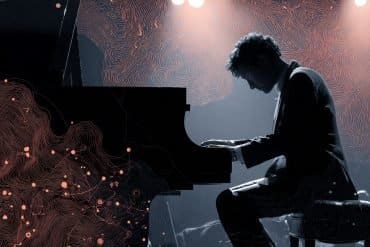Summary: A study shows that by age three, children can understand others’ intentions using active mirror neurons. This discovery highlights the early development of the “resonance” system, crucial for social cognition.
Researchers found that preschoolers’ mylohyoid muscle activates when anticipating goal-directed actions. These findings could aid early diagnosis of conditions like autism spectrum disorder.
Key Facts:
- Early Understanding: Three-year-olds use mirror neurons to grasp others’ intentions.
- Muscle Activation: Mylohyoid muscle activates during goal-directed action observation.
- Diagnostic Potential: Could help in early detection of social cognition deficits in autism.
Source: Universita Cattolica
By the age of three, children are capable of understanding others, “mirroring” those they are with to imitate and anticipate their intentions. They are able to do it thanks to the sophisticated neurofunctional architecture that is necessary to understand others’ intentions, the mirror neurons, that result already active at this age.
It’s the result of a study published in the prestigious journal PNAS, led by the collaboration between Giacomo Rizzolatti of the University of Parma, the scientist who discovered mirror neurons, and the research group composed of Cinzia Di Dio, Laura Miraglia, Giulia Peretti and coordinated by Antonella Marchetti, Director of the Department of Psychology at the Università Cattolica, Milan Campus.

“This is a very important discovery,” explains Professor Marchetti, “as it demonstrates that even at such a young age, children are equipped with the ‘resonance’ system constituted by mirror neurons, which are the building blocks upon which a more complex and articulated understanding of the social world will be built with development and experience.”
Although preschoolers are capable of planning goal-directed motor action sequences, their understanding of the intentions of others engaged in motor tasks had not been thoroughly investigated until now.
The group from Università Cattolica, along with Professor Rizzolatti, measured the ability of preschool children to organize a sequence of motor actions by understanding the intention behind another individual’s chain of actions.
To verify this ability, the researchers measured the activation of the mylohyoid muscle, involved in opening the mouth, while the children grabbed a piece of food to eat or a piece of paper to put into a container.
When grabbing the food, the mylohyoid muscle activation began several milliseconds before the action was completed. The muscle did not activate when grabbing the paper, suggesting a planned sequence of motor events focused on the action’s goal.
Even when the children observed an experimenter performing the same grabbing tasks, the mylohyoid muscle activated during the observation of the eating task.
However, as Professor Marchetti explains, “we discovered that the muscle activation occurs more slowly compared to older children, aged 6-9 years (examined in previous studies), who are supported by the emergence of more sophisticated cognitive processes.”
According to the authors, the results suggest that understanding others’ motor intentions is a developing ability in preschool children.
“In conclusion,” Professor Marchetti emphasizes, “the current data provide further support for the evidence regarding the various stages of child development in this domain, in continuity with research on infants that show early attunement to goal-directed motor acts.
Overall, these results are also relevant from the perspective of early diagnosis, for example, in the case of children with autism spectrum disorder, as they would make it possible to implement a psychophysical instrumental assessment of an eventual deficit in understanding intentions and a possible impairment of fundamental precursors for the development of social skills,” she concludes.
About this neurodevelopment research news
Author: Nicola Cerbino
Source: Universita Cattolica
Contact: Nicola Cerbino – Universita Cattolica
Image: The image Is credited to Neuroscience News
Original Research: Closed access.
“Actions chains and intention understanding in 3-to 6-year-old children” by Giacomo Rizzolatti et al. PNAS
Abstract
Actions chains and intention understanding in 3-to 6-year-old children
In intentional behavior, the final goal of an action is crucial in determining the entire sequence of motor acts. Neurons have been described in the inferior parietal lobule of monkeys, which besides encoding a specific motor act (e.g., grasping), have their discharge modulated by the final goal of the intended action (e.g., grasping-to-eat).
Many of these “action-constrained” neurons have mirror properties responding to the observation of the motor act they encode, provided that this is embedded in a specific action.
Thanks to this mechanism, the observers have an internal copy of the whole action before its execution and may, in this way, understand the agent’s intention. The chained organization of motor acts has been demonstrated in schoolchildren.
Here, we examined whether this organization is already present in very young children. To this purpose, we recorded EMG from the mylohyoid (MH) muscle in the children aged 3 to 6 y. The results showed that preschoolers, like older children, possess the chained organization of motor acts in execution.
Interestingly, in comparison to older children, they have a delayed ability to use this mechanism to infer others’ intentions by observation.
Finally, we found a significant negative association between the children’s age and the activation of the MH muscle during the grasp-to-eat phase in the observation condition. We, tentatively, interpreted it as a sign of an immature control of motor acts.






